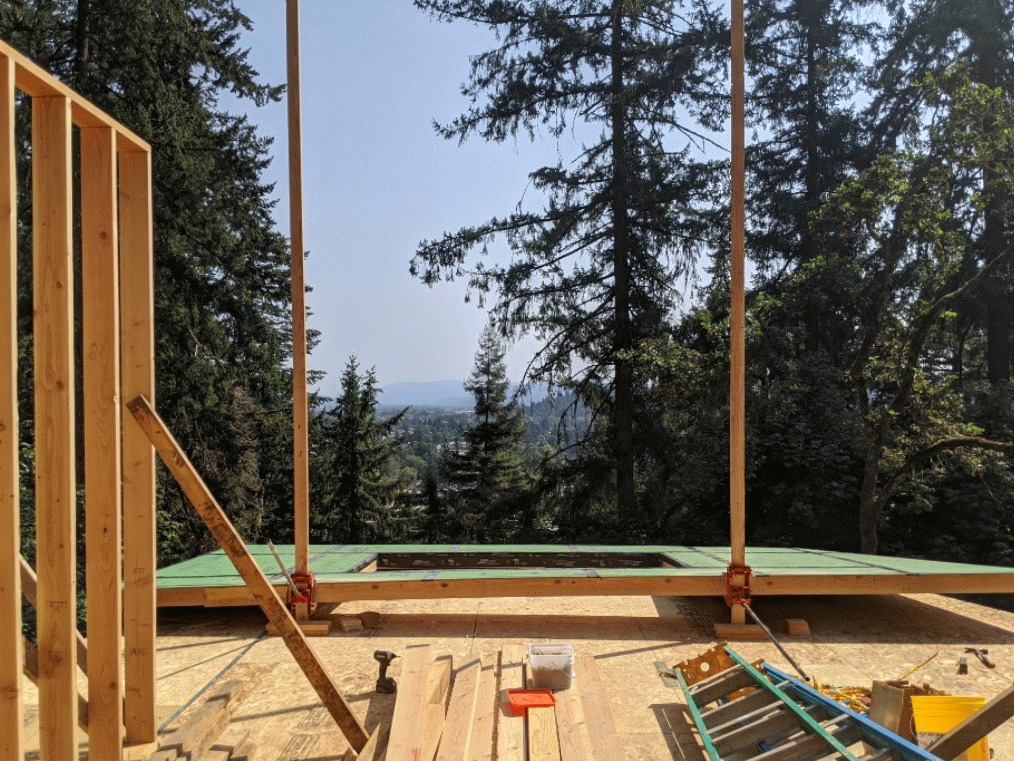Birch Fircrest House
permitting approved, in construction
Eugene, Oregon
2018 American Institute of Architects Southwest Oregon, Citation Award
Increasing prices for developable parcels within Eugene, Oregon’s urban growth boundary and the irregular climactic condition of a steeply sloped east facing site created the opportunity to test a hypothesis of the value of human-scaled climate data for design. The key question was how standard Rhino Grasshopper radiance plugin Ladybug data from the airport EPW weather data located 5 miles away would vary with variations of climate data collected on-site using CSV and GIS overlapped database for both geographic and climactic information. How would this effect 1) building form, 2) solar stack effect and chimney for cooling; 3) window location and 4) vegetation for southern light filtration.
The design process began first at the scale of building form carving the base of the house volume back to both 1) unblock to the eastern view to the South Sister Cascade Mountain view and 2) carve out south facing exterior space in this narrow urban. A grid of points was established and z-coordinates gathered at 10 foot intervals and entered into the geospatial database. This combined with a geotechnical survey and new test holes built a precise 3D model of both the existing terrain and basalt pinning location below. A solar chimney was designed to draw cool air across the 3rd floor living space and flush out above the 4th floor clearstory. Rhino Grasshopper’s radiance plugin Ladybug was used to test various carving angles to balance maximum 3D cantilevered pinning the other rock below and minimize southern radiation in summer months. Lastly, an array Arduino sensor prototypes was deployed across the site to demonstrate the value differences, across 1) space and 2) time of day, of temperature, humidity, light and sound pollution, human-scaled differences not capable within the Ladybug radiance type information from the nearby airport EPW weather data.
The data proved that temperature and sound differences existed within the resolution of 10 or fewer feet The results effected design decisions for 1) locations of operable windows and triple glazed sound insulation, and 2) location and species selection of property edge tree planting for both shading and screening.


































